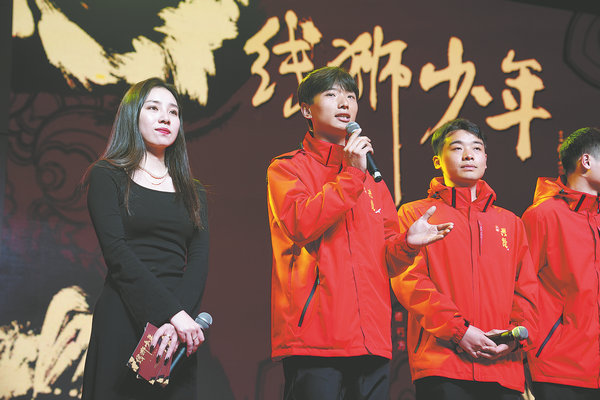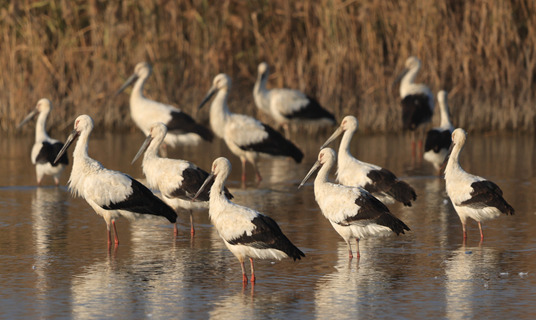High hopes for lion dance of the air
 Chen speaks at a launch ceremony for a documentary featuring their string lion dance experiences in Ningde, Fujian. [Photo provided to China Daily]
Chen speaks at a launch ceremony for a documentary featuring their string lion dance experiences in Ningde, Fujian. [Photo provided to China Daily]
The finale is the unity of man and lion performance, during which the lions bow to the audience to express their gratitude to the people, and to bless their wishes for good weather for farming, he adds.
Thanks to the creativity of folk artists across the ages, the dance has become more sophisticated and increasingly popular.
Chen founded his own troupe in 2014 out of his passion for the tradition that is deeply rooted in his hometown and consulted his elders to learn how to make the lions.
The first step is to fashion one out of the local Moso bamboo. "The bamboo has to be those grown in the south or just north of the mountains, because it tends to be more robust from receiving stronger sunlight," Chen says. "The bamboo nodes should be a little longer, so they are less likely to crack open when chopped, and you should always choose mature bamboo with red spots on its surface," he adds.
The bamboo is split and its skin is separated and baked over fire.
"Paper is pasted onto the bamboo and paint is applied," Chen says, adding that the other steps include assembling the mane and painting the decorations.
"It takes at least a month to make a lion," he says.
As the string lion dance was passed strictly down along family lines, it was difficult for Chen's team to find a trainer.
"We watched performances in the town and videos of string lion shows, learning as we watched, and gradually mastered the skills," Chen says.
During the dance, the performers cannot see the lions on the stage and have to rely entirely on the rhythm of the drums and gongs to control their movements.




